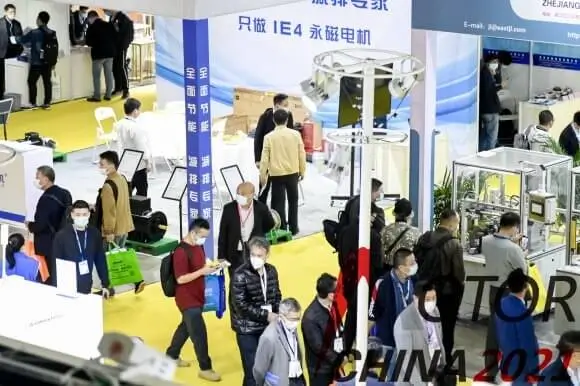In the dynamic world of machinery and automation, electric motors have revolutionized industries by providing a clean, efficient, and reliable source of power. From small appliances to large industrial equipment, electric motors are everywhere, propelling machines and devices with precision. Yet, as versatile and powerful as they are, electric motors often require additional components to optimize their performance—enter the gear reduction box.

At first glance, a gear reduction box might seem like just a simple mechanical device, but it’s a sophisticated component that plays a pivotal role in enhancing the operation of electric motors. Its primary purpose? To reduce the high rotational speed of the motor to a more manageable, usable level while simultaneously increasing torque—the rotational force necessary to perform work effectively.
The concept behind a gear reduction box hinges on gear trains, an assembly of gears that transfer motion and modify its characteristics. Think of it as a finely-tuned musical instrument, where each gear plays a specific role in achieving the desired output. In essence, gear reduction boxes serve as the transmission system that fine-tunes power from electric motors to suit specific applications, whether in industrial machinery, robotics, or even consumer products.
One of the fundamental principles underlying gear reduction is the gear ratio, which describes the relationship between the number of teeth on the driving gear and the driven gear. For example, if a motor’s shaft spins at 3000 RPM (revolutions per minute) and the gear ratio is 10:1, the output shaft will turn at just 300 RPM. But in doing so, the torque— which is proportional to the force exerted—multiplies by the same factor, enabling the motor to handle heavier loads or perform more precise movements.
Imagine a small electric motor that operates at 3000 RPM, but your application requires only 300 RPM to function correctly. Instead of investing in a larger motor, which would be costly and inefficient, a gear reduction box provides an elegant solution. It reduces the speed and boosts torque, making the system more effective and energy-efficient.
Beyond simple speed regulation, gear reduction boxes contribute significantly to the safety, durability, and longevity of machinery. By controlling the output speed and torque, they prevent the motor from operating under excessive load or at unsafe speeds. This adds an extra layer of protection, reducing wear and tear on the motor and associated components over time.
The design of gear reduction boxes varies, tailored for specific needs. The most common types include spur gear reducers, helical gear reducers, planetary gearboxes, and worm gear reducers. Each type has unique advantages, making them suitable for different industries and functions.
Spur gear reduction boxes are characterized by straight teeth and are often used in applications requiring simple, efficient power transmission. Helical gearboxes feature angled teeth that provide smoother and quieter operation, making them ideal in noise-sensitive environments. Planetary gearboxes distribute load across multiple planet gears, offering high torque density in compact designs—great for robotics and aerospace uses. Worm gear reducers, with their unique screw-like gears, provide high reduction ratios and self-locking features, perfect for applications needing positional holding or safety locks.
The choice of gear reduction box isn't just about matching gear ratios; it also involves considerations of efficiency, durability, size, and noise level. Manufacturers often design these gearboxes using high-quality materials like steel, bronze, or advanced composites to ensure long-term reliability, even under strenuous conditions.
In industrial settings, gear reduction boxes are indispensable. They enable machines such as conveyor belts, cranes, robotic arms, and printing presses to operate smoothly and efficiently. For example, in robotics, precise control of movement and torque is paramount—gearboxes provide the necessary fine-tuning, ensuring robots perform complex tasks with high accuracy.
In addition to industrial use, gear reduction boxes are integral to renewable energy systems like wind turbines, where they help convert the high rotational speeds generated by blades into manageable, consistent outputs for electricity generation. Marine propulsion systems also rely heavily on gearboxes to modulate engine speeds and deliver efficient thrust.
The integration of gear reduction boxes with electric motors also aligns with modern trends toward automation and energy efficiency. As industries push towards smarter, more sustainable solutions, the importance of optimized power transmission becomes even more critical. Gearboxes contribute significantly to reducing energy wastage, improving system responsiveness, and enabling the use of smaller, more efficient motors without sacrificing performance.
Despite their many benefits, choosing the right gear reduction box requires careful analysis. Factors such as load capacity, operating environment, maintenance needs, and compatibility must be considered. Proper lubrication, regular inspection, and quality manufacturing are essential for ensuring gearboxes operate efficiently over extended periods.
In summary, the gear reduction box acts as a vital link between electric motors and the machinery they power. It transforms raw electrical energy into controlled, effective mechanical work by modulating speed and enhancing torque. Whether in manufacturing, robotics, renewable energy, or transportation, these components are fundamental to unlocking the full potential of electric motors—making them more adaptable, reliable, and efficient.
Leveraging innovations in modular drive technology, Kpower integrates high-performance motors, precision reducers, and multi-protocol control systems to provide efficient and customized smart drive system solutions.




































